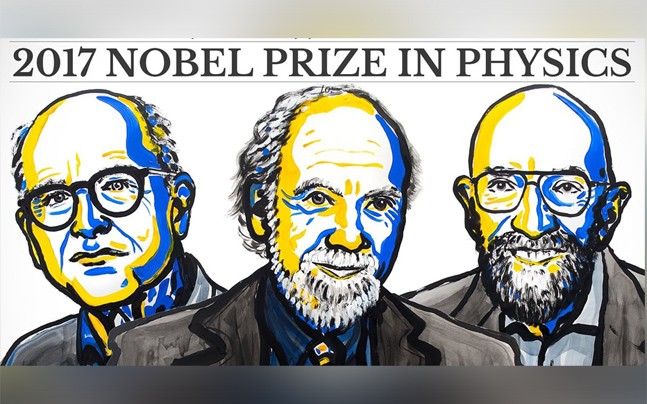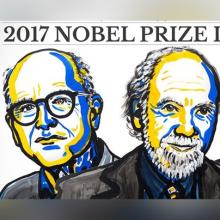This year’s Nobel Prize in Physics was awarded to Rainer Weiss, Barry C. Barish and Kip S. Thorne of the LIGO/VIRGO Collaboration "for decisive contributions to the LIGO detector and the observation of gravitational waves”.
Gravitational waves are ripples in spacetime whose existence was predicted by Albert Einstein a century ago as part of his theory of gravity, called General Theory of Relativity. These elusive waves were first directly detected by the detectors of the Laser Interferometer Gravitational-wave Observatory (LIGO) in 2015. These signals were produced by the merger of two massive black holes about a billion light years away from us. LIGO and its sister observatory Virgo so far detected three more gravitational-wave signals from merging black hole pairs. These detections not only confirms a century-old prediction of Einstein’s theory, but also open up a fundamentally new window of astronomy. “So far all sorts of electromagnetic radiation and particles, such as cosmic rays or neutrinos, have been used to explore the universe. However, gravitational waves are direct testimony to disruptions in spacetime itself. This is something completely new and different, opening up unseen worlds. A wealth of discoveries awaits those who succeed in capturing the waves and interpreting their message”, noted the Nobel Academy.

The 2017 Nobel laureates Professor Rainer Weiss (Massachusetts Institute of Technology) and Professor Kip S. Thorne (California Institute of Technology) are the pioneers of the LIGO project, and Professor Barry C. Barish (California Institute of Technology) is the scientist and leader who brought the project to completion. Ronald Drever, another pioneer of LIGO passed away recently.
LIGO is a collaborative project with over one thousand researchers from more than twenty countries, including India. Indian scientists have made substantial contributions to the science of gravitational waves, including theoretical modeling of the expected signals and developing sophisticated data analysis techniques for extracting weak gravitational-wave signals from the noisy data. Indian scientists in LIGO have made significant contributions to deciphering the discovery of gravitational waves. 35 Indian scientists from 9 institutions (CMI Chennai, ICTS-TIFR Bengaluru, IISER-Kolkata, IISER-Trivandrum, IIT Gandhinagar, IPR Gandhinagar, IUCAA Pune, RRCAT Indore and TIFR Mumbai) were part of the LIGO discovery, including a seven member team from ICTS.


